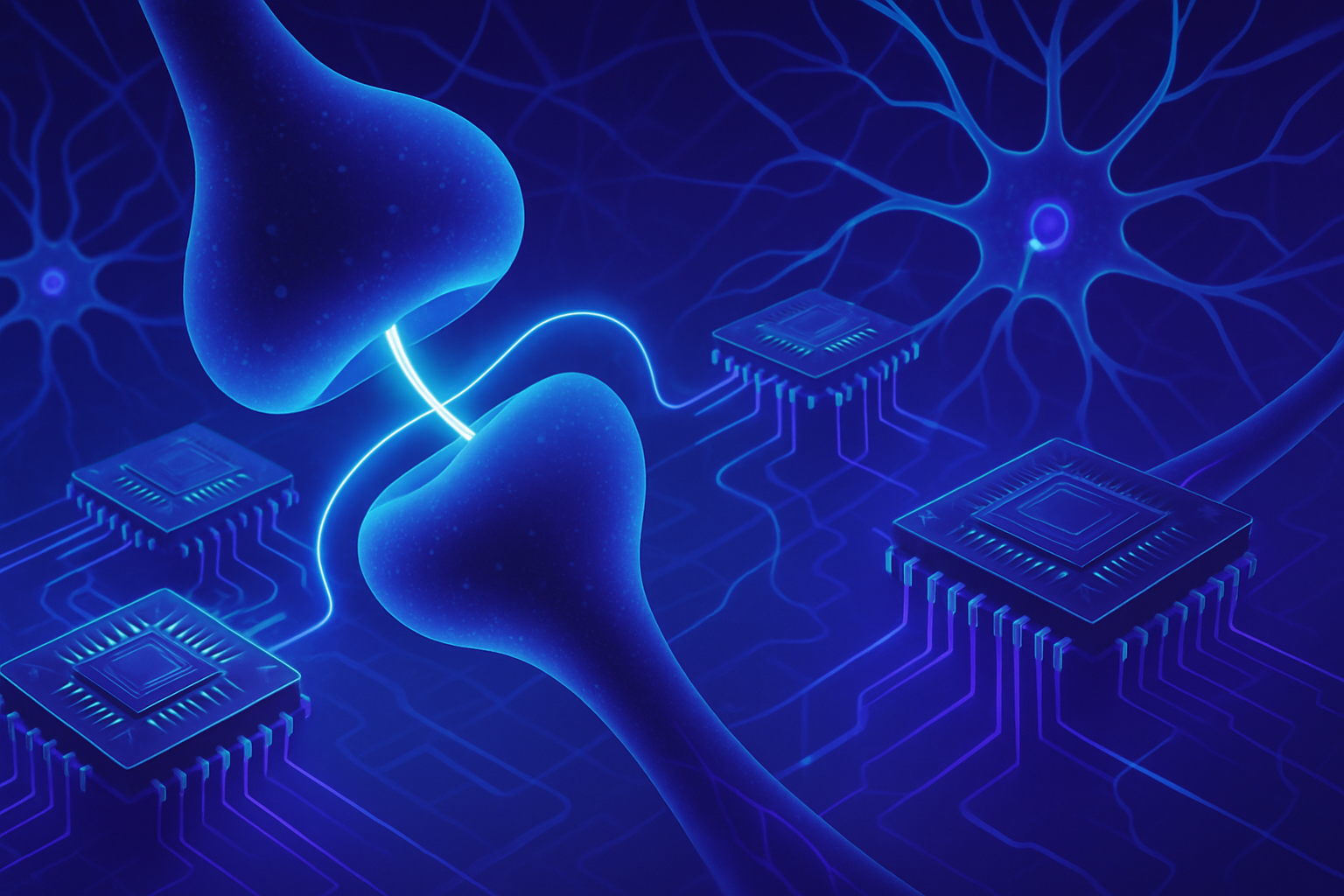The challenges of neuromorphic computing require radical innovations. In an era where traditional silicon processors are showing their limitations, the search for energy efficiency is intensifying. Artificial intelligence models require an architecture capable of processing huge volumes of data while reducing energy consumption.
Recent research proposes exploiting magnetic tunneling junctions to simulate the functioning of synapses. These components, at the nanoscale, revolutionize computing concepts. The marriage of optoelectronic signals emerges as a brilliant solution, allowing flexible and dynamic adjustment of voltage. This advancement promises to open new perspectives in the field of information processing.
Cutting-edge technology in neuromorphic computing
Research led by Dr. Tahereh Sadat Parvini and Prof. Dr. Markus Münzenberg, in collaboration with researchers from several European countries, presents a significant advancement in the field of neuromorphic computing. The study focuses on magnetic tunneling junctions (MTJs), nanoscale components that play a key role in the energy efficiency of future computing systems.
Challenges of conventional processors
Traditional silicon processors show limitations in the face of the growing demands of artificial intelligence. These systems consume a considerable amount of energy and suffer from connectivity issues between storage and processing units. In a context where AI models must handle huge volumes of data, there is a need to design new computing architectures.
Magnetic tunneling junctions
MTJs are at the center of this research because they possess unique capabilities akin to those of nerve cells. They are capable of storing and processing information, which makes them suitable for computing concepts that mimic the functioning of the human brain.
The hybrid excitation scheme
The research introduced a hybrid optoelectronic excitation scheme that combines electric currents with short laser pulses. This process allows for the generation of high thermoelectric voltages in the MTJs, an optimal condition for simulating the behavior of synapses.
Remarkable properties of MTJs
Three exemplary properties of MTJs have been identified by the research team. Firstly, the generated voltage can be flexibly adjusted, mimicking the modulation of synaptic weight in the brain. Secondly, “spike” signals occur spontaneously, simulating the exchange of information between nerve cells. Lastly, a neuromorphic network based on this technology achieved a recognition accuracy of 93.7% for handwritten digits during computer simulations.
Compatibility with current technologies
The results indicate that MTJs, optoelectrically controlled, represent a compact and energy-efficient platform for the next generation of computing. Being compatible with existing semiconductor technologies, this innovation promises applications in both everyday devices and high-performance computers.
Frequently asked questions
What is a magnetic tunneling junction (MTJ) and how does it work?
A magnetic tunneling junction is a tiny device that uses magnetic layers separated by an insulator. When electric current passes through, it can create an electron tunnel, allowing for the storage and processing of information in a manner similar to synapses in the brain.
How do MTJs mimic the behavior of synapses in neuromorphic networks?
MTJs can modulate their output voltage based on electric currents, thereby reproducing how synapses adjust their weight in response to received signals, facilitating computations similar to those performed by the brain.
What are the energy advantages of MTJs compared to traditional processors?
MTJs consume less energy than conventional silicon processors because they can perform processing and information storage operations simultaneously, reducing energy consumption for data transmission.
What types of applications could benefit from technologies based on MTJs?
Technologies based on MTJs can be applied in various fields such as artificial intelligence, machine learning, and mobile devices, as they offer better energy efficiency and advanced processing capabilities.
What recognition accuracy can neuromorphic systems using MTJs achieve?
Computer simulations using this technology have demonstrated a recognition accuracy of 93.7% for handwritten digits, showcasing the potential of MTJs in practical applications.
Can MTJs be integrated into current electronic devices?
Yes, MTJ technologies are compatible with current semiconductor technologies, meaning they can be integrated into modern electronic devices with minimal modifications.
What is the role of optoelectric excitation in the functioning of MTJs?
Optoelectric excitation combines electric currents with laser pulses to generate high thermoelectric voltages, facilitating the targeted simulation of synaptic behavior in neuromorphic networks.
What challenges exist for the adoption of MTJs in futuristic computing technologies?
Among the challenges are the miniaturization of components, optimizing their integration with other technologies, and the need for ongoing research to further improve their performance and energy efficiency.




